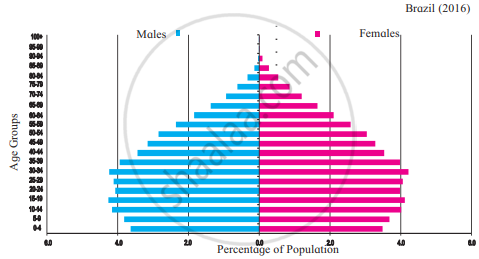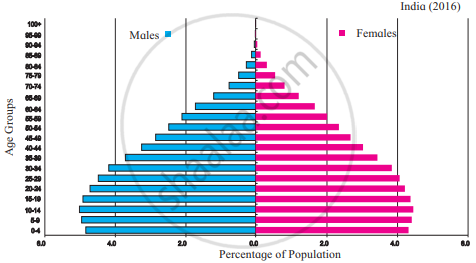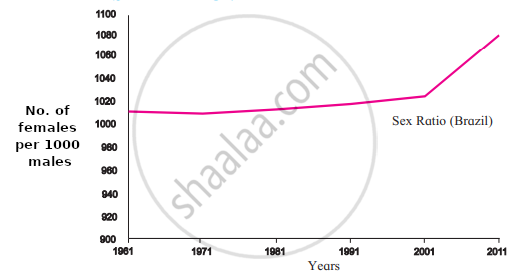Advertisements
Advertisements
Question
Classify the factors affecting the distribution of population into favourable and unfavourable. Nearness to sea, lack of roads, temperate climate, lack of industries, new cities and towns, tropical moist forests, minerals, semi-arid climate, cultivable land.
Solution
| FAVOURABLE | UNFAVOURABLE |
| Temperate climate | Lack of roads |
| Nearness to sea | Lack of industries |
| New cities and towns | Tropical moist forest |
| Minerals | semi-arid climate |
| Cultivable land |
APPEARS IN
RELATED QUESTIONS
The average life expectancy in India is increasing.
Is the following sentence right or wrong? Correct the wrong one.
The life expectancy of Indians is decreasing.
Giving examples, correlate climate and population distribution.
What should be done so that our manpower is utilized properly, sex ratio improves and population growth is controlled? Write two to three sentences on each.
Distinguish between
Average life expectancy in India and Brazil
Observe the following graph and answer the questions given below-
India- % of population (2016)

- Which type of graph is this?
- Which age group has the highest population?
- Write class interval of age groups given on Y-axis.
- Whose number is more in males and females of age above 60?
- How much percent of females are found in age group of 55 to 59 years?
- After which age group is the decrease in population found?
Observe the following graphs and answer the questions given below:


- In which country is the number of female is more in the age group 15-19 years?
- In which country do you find a higher percentage of the population belonging to the age group 80 + years?
- In which country is the number of children of age group 0-4 years more?
- In Brazil, which age group has the highest population.?
- While comparing the age-sex pyramids, which pyramid has a broader base?
- In which country is the proportion of the population belonging to the age group less than 15 years lesser?
With the help of given statistical data, prepare a simple bar graph and answer the following questions.
| Year | Percentage % of Urban Population in India |
| 1961 | 18.0 |
| 1971 | 18.2 |
| 1981 | 23.3 |
| 1991 | 25.7 |
| 2001 | 27.8 |
| 2011 | 31.2 |
- Mention the year m which the percentage of urban population in India was 18?
- By how many percent did the percentage of urban population increase in decade 2001 to 2011?
- In which decade was the percent growth in urban population highest?
Observe the following graph and answer the questions given below:


- What does the sex ratio of India indicate ?
- Since when has the sex ratio in India increased?
- What was the condition of sex ratio in India in 1961-71?
- What does sex ratio mean?
- What does the sex ratio of Brazil indicate?
- In which year did the women outnumber men in considerable amount in Brazil?
If the proportion of dependent age groups increases in the composition of population, how will it affect the economy of a country?
